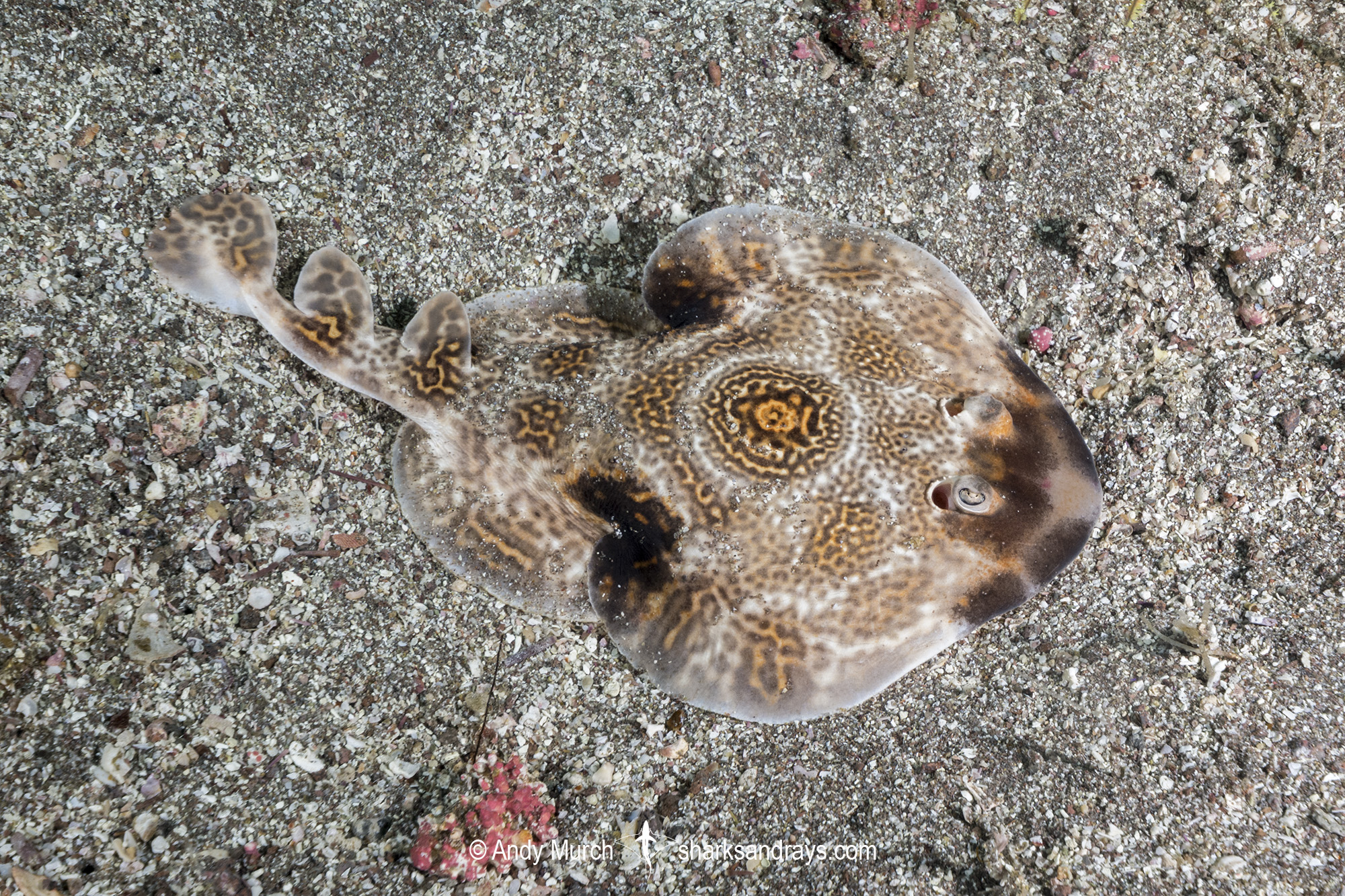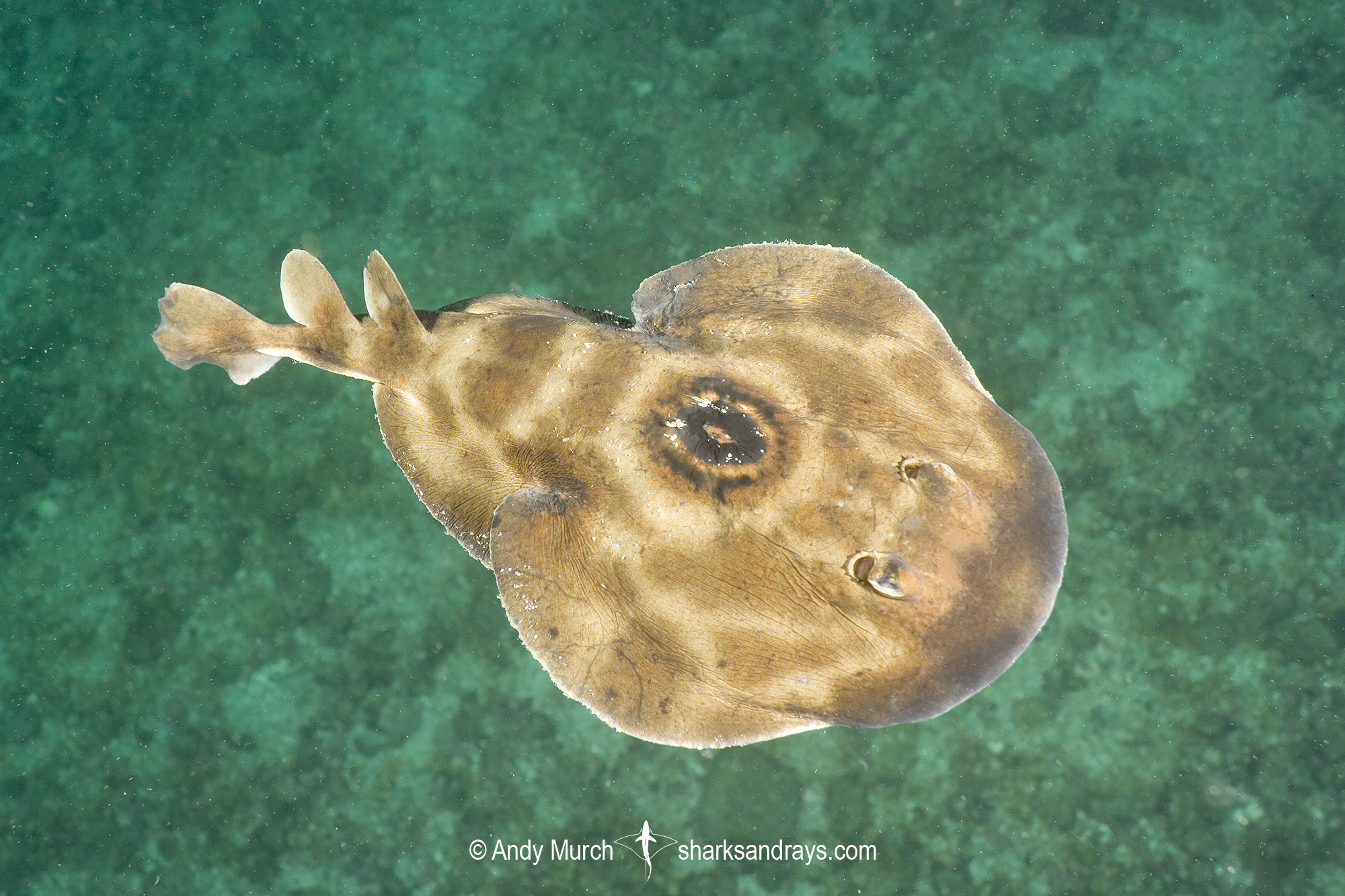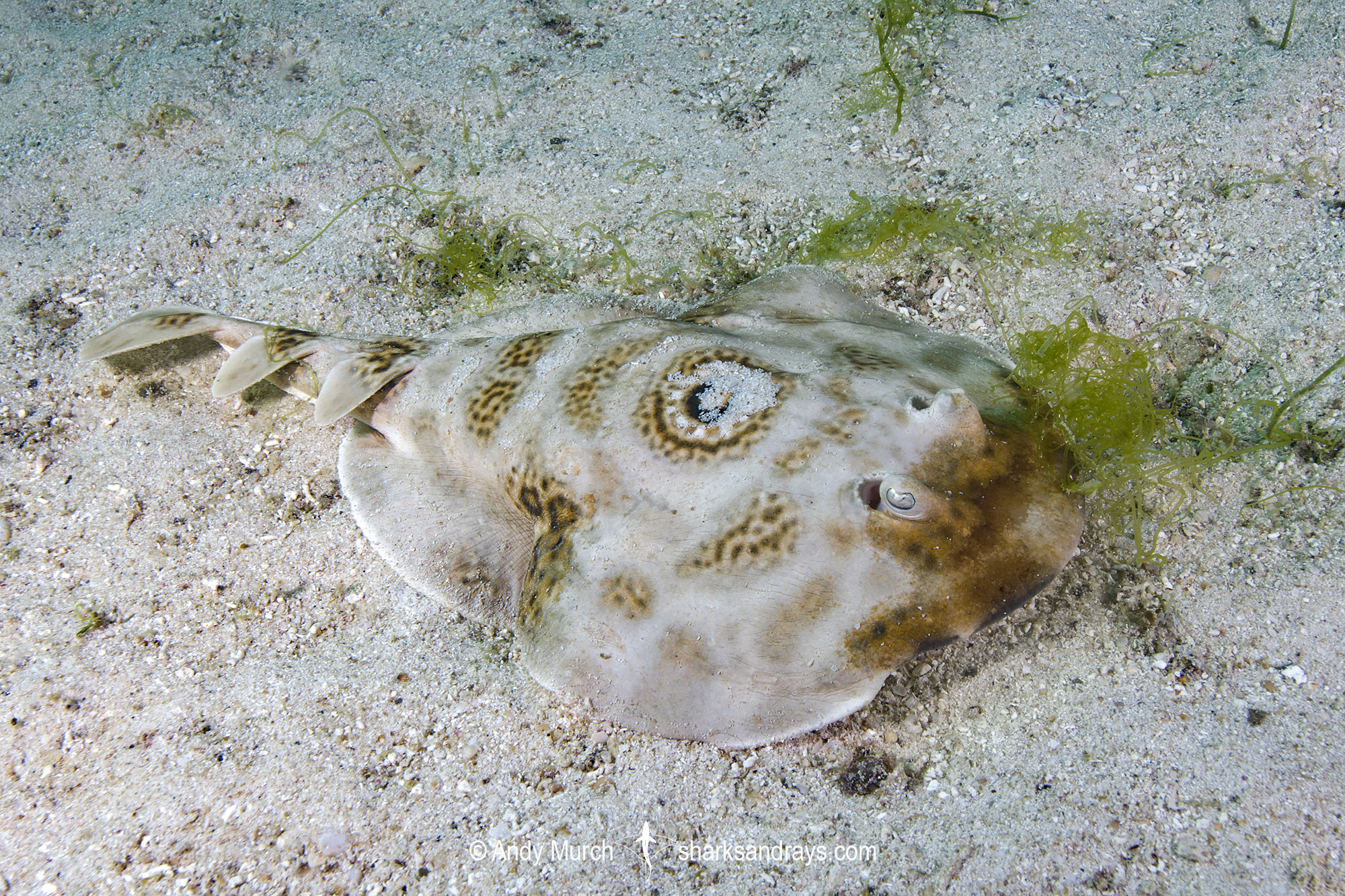Common name(s)
Bullseye Electric Ray, Pacific Dwarf Numbfish.
Identification
A small electric ray with a teardrop-shaped body and a short, evenly rounded snout. Anterior margin of disc broadly convex but indented at pectoral fin origin. Eyes large and protruding; larger than spiracles. Spiracles with 7-10 small papillae on posterior margin. Nasal curtain as wide as mouth. Nostrils circular. Incurrent and excurrent openings separated by stiff tissue.
Pelvic fins broad. Tail short and broad based. Dorsal fins closely spaced, large, with broadly to narrowly rounded apices and broadly convex posterior margins. First dorsal origin over pelvic fins. Caudal fin large, sub-triangular, posterior margin broadly rounded.
Colour
Dorsum highly variable from white to grey-brown or reddish-brown. Distinctive, large central ocellus composed of concentric light and dark rings always present. Remainder of dorsum sometimes unmarked but usually with varying pattern of orange, brown, or dusky blotches, sometimes with intricate reticulations. Snout and pre-orbital area usually darker; sometimes black. Ventrum white.
Size
Maximum length ~25cm.
Habitat
Tropical/sub-tropical seas. Benthic in sandy bays and on rocky or coral reefs. From close inshore to 65m.
Distribution
Eastern Pacific. Found from the upper Sea of Cortez to Ecuador.
Conservation Status
LEAST CONCERN
The Pacific Dwarf Numbfish (Diplobatis ommata) is captured in demersal shrimp trawl fisheries that operate off Mexico, Costa Rica, and Colombia, but it may have some geographic refuge from fishing in areas of its range where shrimp trawl fisheries are generally absent. It also has refuge on rocky reefs and habitats away from trawl grounds, and is generally not susceptible to capture in other major fishing gears. Overall, although it is subjected to intense trawl pressure in some areas, the Pacific Dwarf Numbfish is not suspected to be close to reaching the population reduction threshold and is assessed as Least Concern.
Citation
Pollom, R., Bizzarro, J., Burgos-Vázquez, M.I., Avalos, C., Cevallos, A., Espinoza, M., González, A., Herman, K., Mejía-Falla, P.A., Morales-Saldaña, J.M., Navia, A.F., Pérez Jiménez, J.C. & Sosa-Nishizaki, O. 2020. Diplobatis ommata. The IUCN Red List of Threatened Species 2020: e.T61403A124456804. https://dx.doi.org/10.2305/IUCN.UK.2020-3.RLTS.T61403A124456804.en. Downloaded on 30 May 2021.
Reproduction
Aplacental viviparous. Litter size unknown.
Diet
Adults feed mainly on polychaete worms and small crustaceans.
Behavior
When threatened, bullseye electric rays sometimes swim quickly upwards and direct their white underparts towards a predator or diver; sometimes delivering a shock but usually just a visual threat display.
Reaction to divers
Very easy to approach. Usually remains completely motionless but may try to deliver a shock and then relocate when threatened.
Diving logistics
Bullseye electric rays are fairly common on sandy substrates around popular reef sites from the Sea of Cortez to Panama.
The Midriff Islands north of Loretto, Mexico, and the Catalina Islands near Playa del Coco in Costa Rica are both excellent areas to look for this species.
What’s new
View our full list of updates
Similar species
No other electric rays in the eastern Pacific have a bold ocellus in the centre of their disc.













